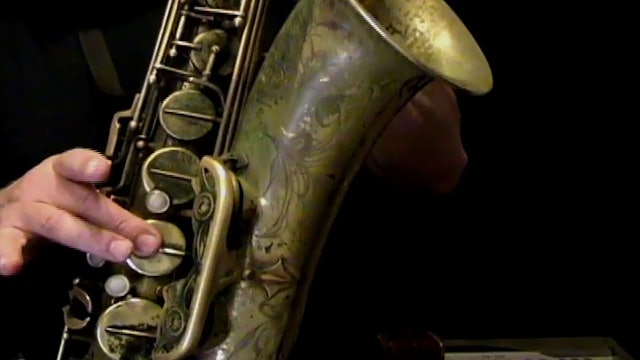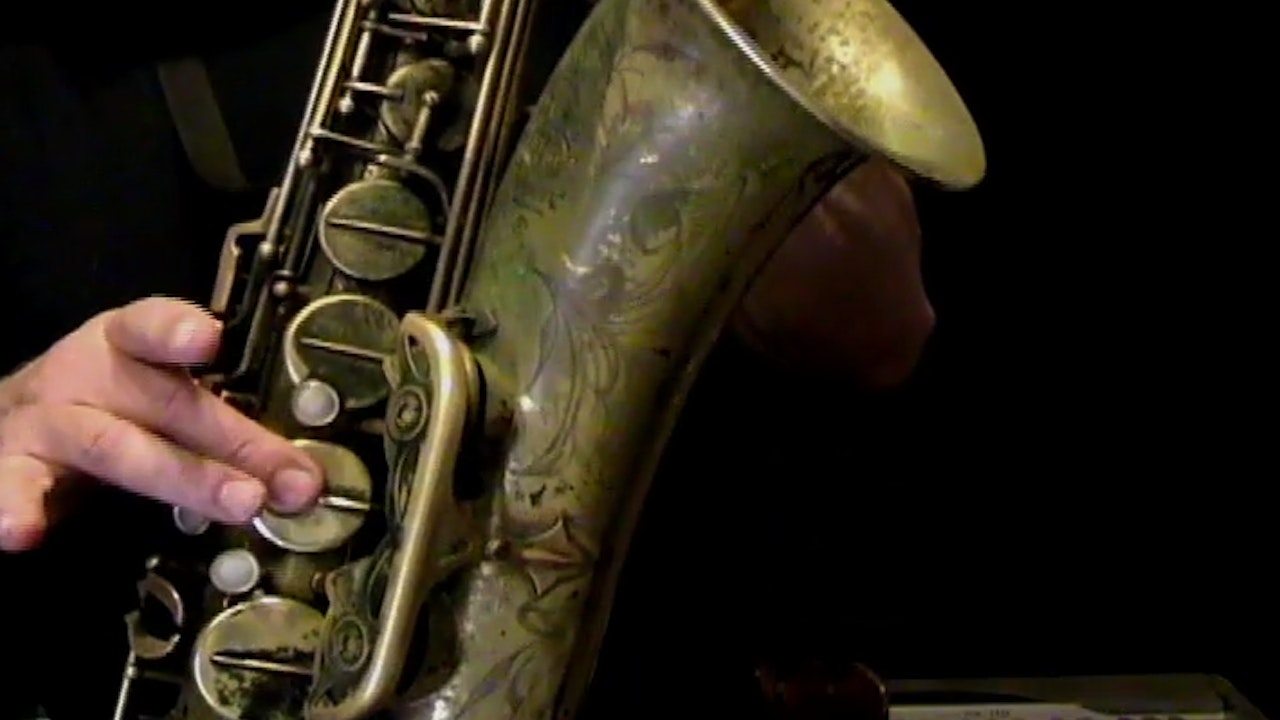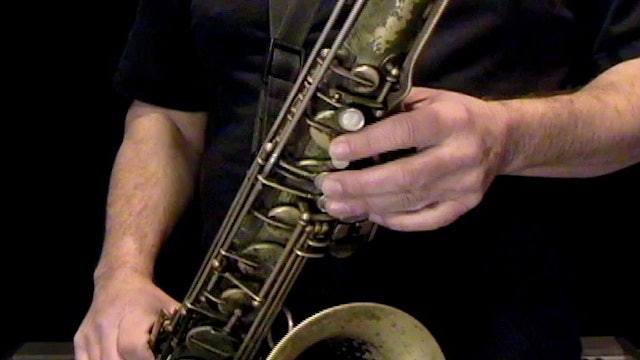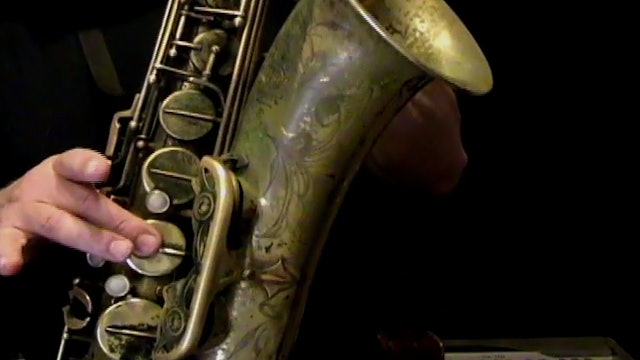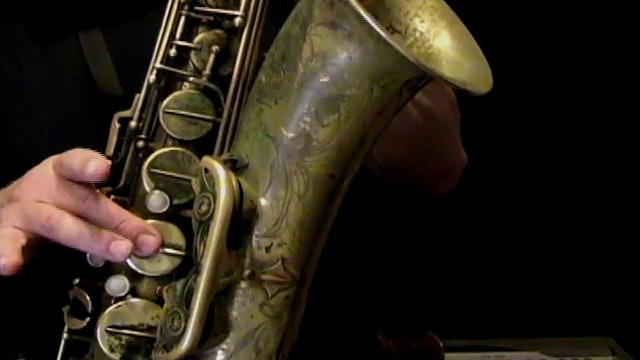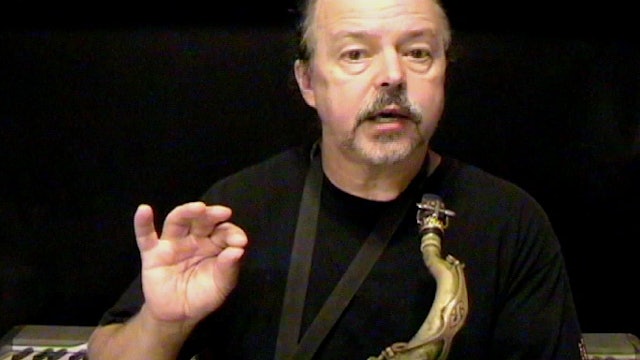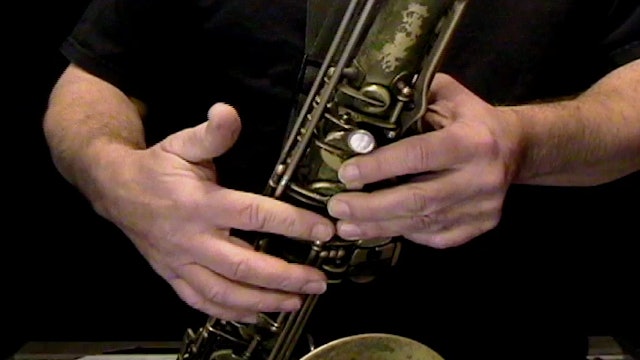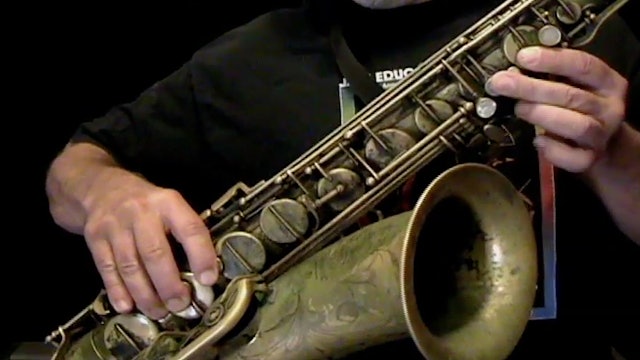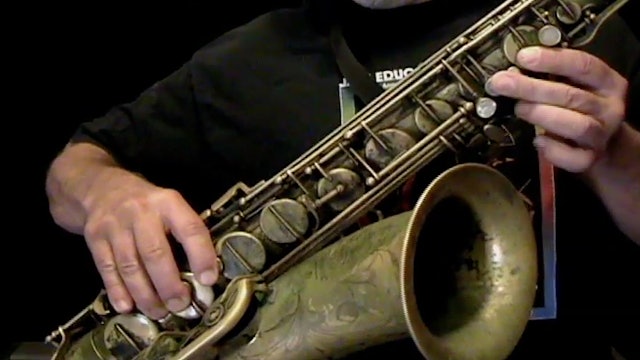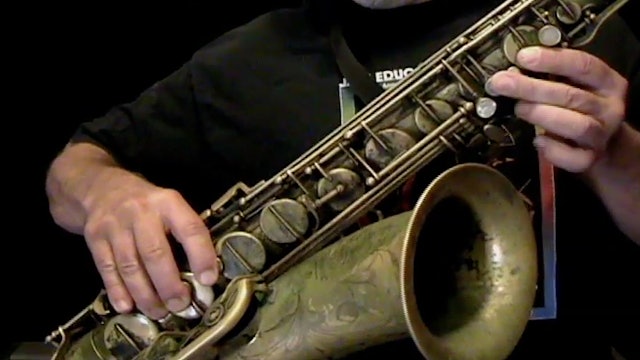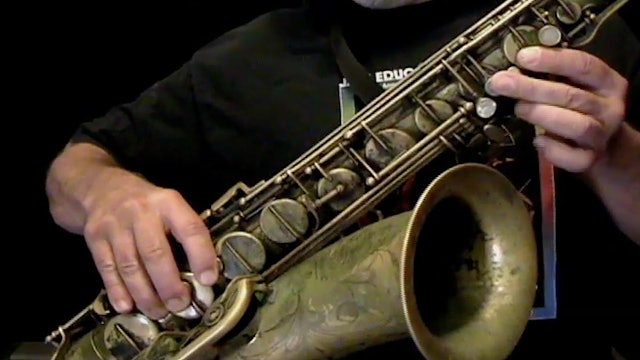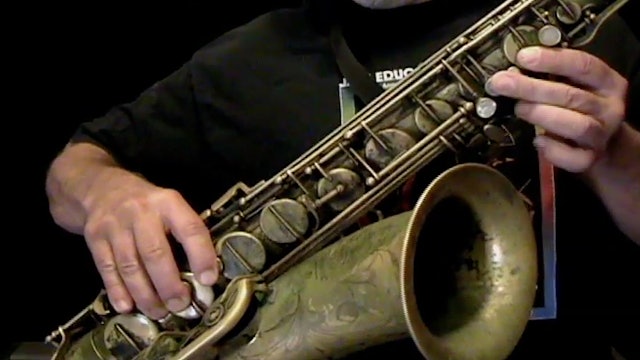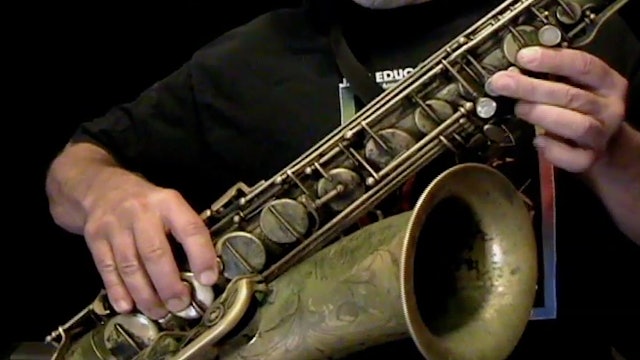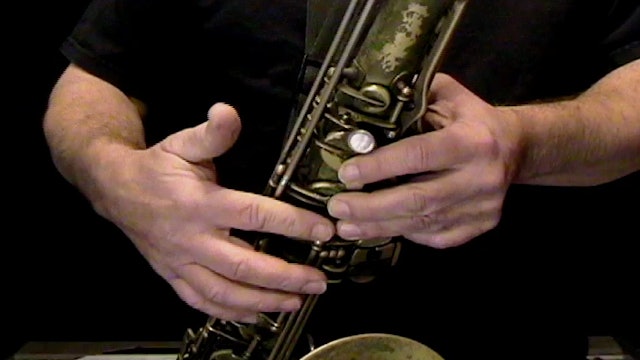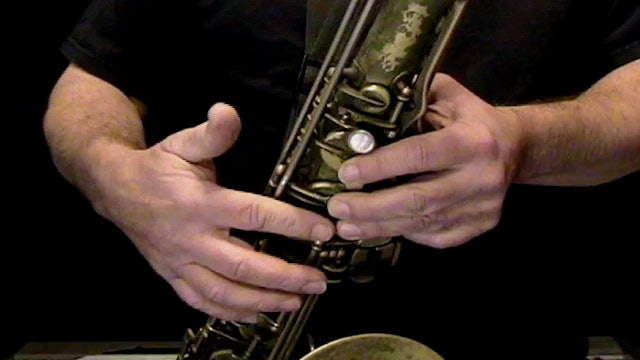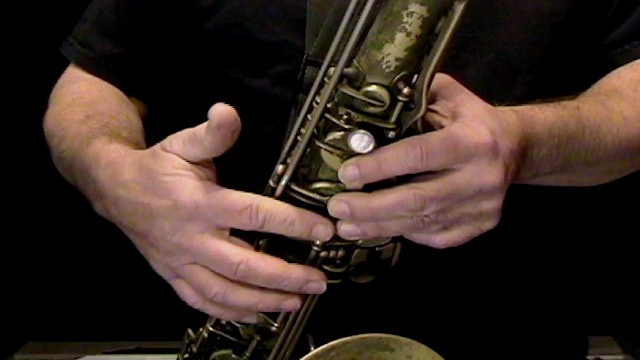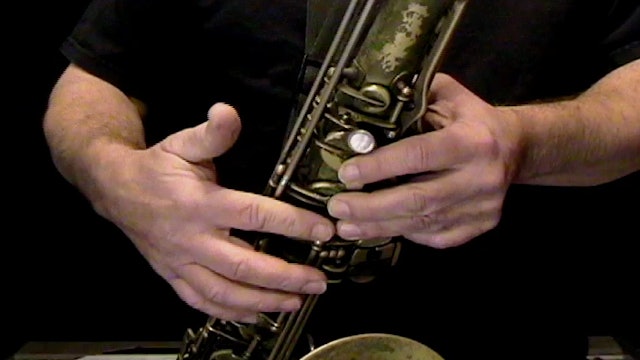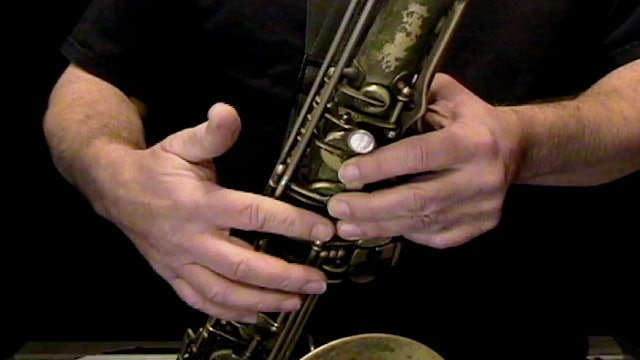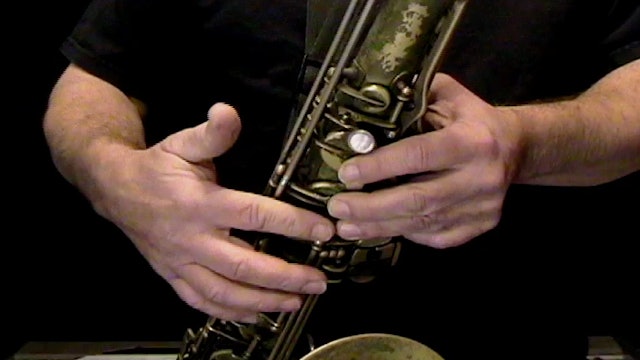Soloing on Tunes
In my Soloing on Tunes series, you'll learn how to apply concepts learned in Stages I-IV to a number of classic jazz standards.
Lessons from the various stages are referenced in most of these lessons, while new concepts are also introduced. You'll also learn about the theory behind the chord progressions, making this a comprehensive approach to learning how to create great solos on tunes.
Play-along tracks are included in the "Extras" bundles!
-
Soloing on Broadway
This lesson uses the chord changes from the standard tune, "Broadway," because it's a fun tune to play and has several very common chordal movements. The lesson begins with some fundamental observations about the changes, which are followed by a step-by-step approach to phrasing and playing the c...
-
Soloing on Softly as in a Morning Sunrise- Phrasing Demonstration
This phrasing demonstration from Soloing on Softly as in a Morning Sunrise shows how the concepts covered in the lesson can be put to use in creating a melodic solo that expresses both the minor tonality and the chord changes.
-
Soloing on Softly as in a Morning Sunrise
A step-by-step approach is explored for creating a meaningful solo over the chord changes used in the jazz standard, "Softly as in a Morning Sunrise." We'll concentrate on phrasing as we work at both expressing the minor tonality and playing the chord changes over a Bossa Nova rhythm section feel...
-
Soloing on All of Me
All of Me ranks very high on the list of "tunes you've got to know," making it essential to the repertoire of any jazz musician. There's a lot of I Play-You Play phrasing practice with a great play-along track in the lesson, as we add chromatic passing tones to your basic arpeggio and pentatonic ...
-
Soloing on But Not For Me
You'll learn how to create a toe tapping, hand clapping, knee slapping solo that swings on chord changes to the standard, "But Not For Me." You'll learn the chord changes basics and how to include the blues scale and major blues scale in your improvisation. There's a lot of I Play-You Play phrasi...
-
Soloing on Misty- Phrasing Demonstration
"Misty" is a favorite among sax players, so I thought it would make a perfect ballad for this series. This is an extensive lesson with four instructional videos totaling over 90 minutes of instruction. Video 1 focuses on the theory behind the chord progression. Video 2 covers the basic vocabulary...
-
Soloing on Misty- Introduction
This introduction gives you an idea of what the complete lesson is all about.
-Video 1 focuses on the theory behind the chord progression. -Video 2 covers the basic vocabulary needed for soloing.
-Video 3 provides phrasing and lots of "I Play-You Play" practice.
-Video 4 shows you how to ... -
1. Soloing on Misty- The Chord Progression Theory
Just as it's important to understand the topic of a conversation, it's important to understand the chord progression to a tune. This makes it easier to create an improvised solo that expresses the song. In this video, I'll cover the details of the chord progression.
-
2. Soloing on Misty- The Basics
You'll learn about the scales and arpeggios associated with each of the chords in the progression. You'll also learn about the timing and feel of the movement of the chords in this video.
-
3. Soloing on Misty- Soloing and Phrasing
Now that you are getting more comfortable with your musical vocabulary and the timing of the chord changes, it's time to start working on soloing and phrasing. I'll give you suggestions and we'll do a series of I Play-You Play passes using the play along track. We'll begin with some simple concep...
-
4. Soloing on Misty- Advanced Soloing!
I often use the language analogy when talking about jazz improvisation. With this in mind, it makes perfect sense to conclude that a more sophisticated vocabulary can be helpful in telling a more complex story. This is true whether you're telling a story with words, or a musical story in the form...
-
From Licks to Language- Introduction
Why do we transcribe and learn licks? Of course, it's important to satisfy our natural curiosity as to what the greats played and how they played these things- but there's more. In this lesson, we'll use four licks from my "Transcribe This Lick" series as we explore ways to enrich your playing by...
-
From Licks to Language- Video 1
-
From Licks to Language- Video 2
-
From Licks to Language- Video 3
-
From Licks to Language- Video 4
-
Soloing on Scrapple From the Apple- Phrasing Demo
In Soloing on Tunes: Scrapple From the Apple, you'll learn about bebop components including bebop scales, approach tones, enclosures, and double-timing. You'll hear these components at action in this video!
-
Soloing on Scrapple From the Apple- Introduction
I wanted to create a lesson that deals with some common bop style components using a chord progression that was not overly complex, so naturally Charlie Parker's Scrapple From the Apple came to mind. In this lesson we'll cover the basics of the chords, but we'll also get into a number of harmonic...
-
1. Soloing on Scrapple From the Apple- The Chord Progression
You'll learn about the key, form, and chord-to-chord relationships in this video. In addition to numbering the progression, we'll locate the various tonalities and discuss how they relate to the key center.
-
4. Soloing on Scrapple From the Apple- Double-Timing
Learning to play double-time requires good technique, command over the vocabulary, and disciplined practice at presenting your musical ideas in time with good rhythm. Learn how to begin putting it together in this video!
-
3. Soloing on Scrapple From the Apple- Phrasing and Soloing
Becoming as master of the bop language will take a lot of time and determined practice. In this portion of the lesson I'll show you some practice techniques for assembling bebop scales and enclosures into lines and phrases. Be prepared for "I Play-You Play" practice with a great play-along track!
-
2. Soloing on Scrapple From the Apple- The Basics of Bop
Learn about the major, minor, and dominant bebop scales and exercises for incorporating them into your practice on the chord progression. You'll also learn about approach tones and enclosures with lots of practice exercises.
-
Softly as in a Morning Sunrise EXTRAS.zip
5.27 MB
